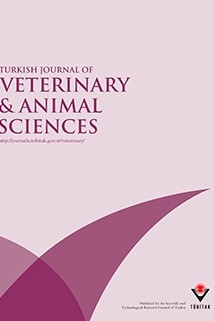
Turkish Journal of Veterinary and Animal Sciences
Yazarlar: S.I. SAID, M.M. MUWALLA, J.P. HANRAHAN
Konular:-
Anahtar Kelimeler:Awassi,Repeatability,Litter size
Özet: The objectives of this study were to investigate the environmental factors influencing litter size and postpartum ewe live weight and to estimate the repeatability for these traits and for pre-weaning growth rate in Awassi breed. Least squares means for litter size and ewe body weight were 1.08 and 57.6 kg, respectively. Repeatability estimated by the intraclass correlation method was 0.03, 0.46 and 0.26 for litter size, ewe body weight and pre-weaning growth rate, respectively. Year-month and age of ewe showed highly significant effect on all the traits. It was concluded that selection for litter size should be based not only on ewe performance but also on that of female relatives. The moderate repeatability estimate for pre-weaning growth rate of progeny suggested that an appreciable rate of genetic response in lamb weights could be achieved through selection.